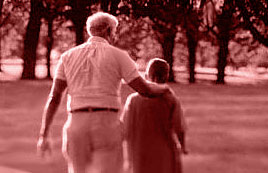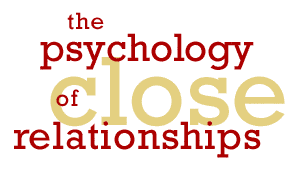






|
Homework: A Partner-Finding Formula
Psychologist Jeffrey Young identified five factors influential in his single clients' probability of finding a committed partner, which
he calls "pF". How do you score?
pF = N x P x A x I x C
| pF: |
your probability of finding a partner for a committed relationship |
| N: |
the number of people you meet in a month |
| P: |
how picky you are (proportion you find attractive) |
| A: |
how attractive (in general) you are to them (proportion of those who would pick you) |
| I: |
how willing and able you are to initiate contact & express interest (probability you'd do so) |
| C: |
how willing & able you are to make a commitment with the other (probability you'd do so) |
Example: You meet about 10 new people every month. You find about half of those "attractive enough." About 60%
of the people who meet you think you are pretty attractive, too. You are only able to muster up the initiative to introduce yourself and
express your interest to about one-third of those. Of those you end up seeing, you could make a real commitment to perhaps one-quarter:
pF = 10 x 1/2 x 3/5 x 1/3 x 1/4 = 1/4
This means your pF is 0.25 of a person every month. At this rate, in order to find an entire person with whom you could
establish a committed relationship, you'd have to wait four months!
Activity: Calculate your pF and identify ways to do what it takes to increase your scores and probabilities for each factor. Be sure to express each answer as
a fraction or a decimal!
| N: |
On average, about how many new people do you meet every month?
What could you do to increase this number? |
| P: |
How picky are you? What percentage do you find attractive?
How can you change your thinking in order to find more people attractive? |
| A: |
How attractive are you? How likely are others to find you attractive?
How can you make yourself more attractive to others? |
| I: |
How likely are you to take the initiative and express your interest?
How could you improve your ability to take the initiative, be less shy, and take that risk? |
| C: |
How likely are you to make a commitment to someone you're seeing?
What can you do to improve your ability to make a commitment? |
Multiply the 5 numbers; the product is your pF. How often would you find your partner in real time? To find out, divide the pF into
1.00 to find out how many months it will take to collect a "whole" person. For example, if you end up with 0.035, divide 1.00 by 0.035 = 20 months: you have a chance of finding a whole person every 20 months at current rates. So to increase your chances and make it
happen more often, pump up those factors:
1. Think creatively about how to meet more people: take a class, visit
different laundromats, join a club, ask friends to introduce you to new people.
2. Be less picky: identify what you do like in each person you know or meet, regardless of
whether there are other qualities that don't appeal to you.
3. Make yourself more attractive: improve your physical appearance, seek and accept
constructive criticism from trusted friends, cultivate your knowledge, develop skills, engage in activities that are meaningful
and appealing to others as well as yourself (not instead of yourself!)
4. Take the initiative, express your interest: join therapy or groups to overcome shyness;
take assertiveness training; offer genuine compliments; suggest mutually pleasant dates with low risk and no obligation; learn to
accept rejection gracefully, and recognizing that you have done well; maintain the friendship even if someone doesn't want to be a date or mate.
5. Cultivate a capacity for commitment: identify what has kept you from commitment and
explore this with yourself, with friends, in therapy. Consider the pros/cons of commitment to another. Be realistic about happiness:
another person cannot "make" you happy -- and commitment is no guarantee of success. If you really want a committed relationship, what
reasonable sacrifices would you make to that end? (Hint: Your best friendships involve commitment -- though not in a romantic or exclusive
context. What do you give up in order to maintain those friendships? Isn't it worth it?).
Each factor and how you might increase its value can constitute a course in itself! This little activity can be a useful exercise for
examining some of your past experiences, and considering how you do or don't want to make changes in the future. But to effect real
change, you need more than an exercise or even a whole course. You need motivation, skill and time. When you know you have all three of
those assets for behavior change, review what you need to change about your behavior -- and what you ought to keep -- and concentrate
on those making changes one at a time, with humor and hope.

|



